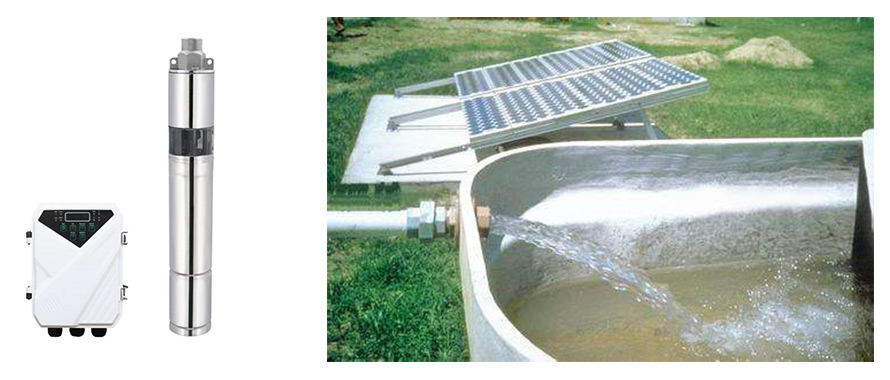In off-grid photovoltaic (PV) systems, choosing the right inverter is a crucial step. The inverter not only determines whether the system can function properly but also directly impacts the system's efficiency, stability, and cost. Home Power Inverter will discuss the principles of selecting inverters for off-grid PV systems, the characteristics of different types of inverters, and their application scenarios, providing readers with a detailed professional guide.
Load types and inverter power selection
In off-grid PV systems, loads can be classified into resistive, inductive, and capacitive loads based on their impedance nature. Each type of load has different requirements for inverters, so identifying the type and power of the load is the first step in choosing an inverter.
- Resistive Loads: Resistive loads are those where the current and voltage are in phase, such as rice cookers, light bulbs, electric stoves, and soldering irons. These loads have relatively low requirements for inverters, and both sine wave inverters and modified sine wave inverters can generally meet their needs.
- Inductive Loads: Inductive loads are characterized by a current lagging the voltage, such as washing machines, air conditioners, refrigerators, pumps, range hoods, motor-driven loads, transformers, relays, and compressors. Inductive loads generate significant inrush currents during startup, requiring inverters that can handle such surges. Moreover, inductive loads have a lower power factor, necessitating inverters with a high power factor to improve system efficiency.
- Capacitive Loads: Capacitive loads have a current leading the voltage, such as compensation capacitors, computers, televisions, and household switch-mode power supplies. While these loads generally have lower requirements for inverters, it is essential to avoid resonance with other loads. An 8kW off-grid inverter can handle such capacitive loads effectively, ensuring smooth operation without causing resonance issues.
When selecting the inverter power, it is crucial to account for both the starting power and the peak power of the loads. For inductive loads like motors, the starting power can be 5-7 times the rated power. Therefore, when calculating the required inverter power, these starting power demands should be included. Additionally, for stringent applications like monitoring stations or communication stations, choosing an inverter with an output power slightly higher than the total load power ensures stable system operation.
Selecting inverter waveform and type
The waveform and type of an inverter significantly impact the system's stability and efficiency. Therefore, a thorough analysis is necessary when choosing an inverter.
Comparison of Pure Sine Wave Inverters and Modified Sine Wave Inverters.
Pure sine wave inverters output a waveform identical to the utility grid waveform, making them suitable for all common electrical appliances. In contrast, modified sine wave inverters produce an approximated sine wave. While they can power some appliances, they are not recommended for devices that require a high-quality waveform. When selecting an inverter, consider the type of loads and the usage scenario.
Choosing Between High-Frequency and Low-Frequency Inverters.
High-frequency inverters use high-frequency switching components or high-frequency isolation transformers, offering advantages such as smaller size, higher efficiency, and lower cost. Low-frequency inverters, using 50Hz isolation transformers, offer benefits such as stable and reliable operation of power components, strong overload capacity, and high impact resistance. When selecting an inverter, consider the load type and usage scenario. For inductive loads like motors or scenarios requiring frequent mobility, low-frequency inverters are recommended. For resistive loads or fixed installations, high-frequency inverters are suitable.

Inverter selection for special application scenarios
- Elevator Loads: Elevators generate a back electromotive force (EMF) during operation, which can damage the inverter if connected directly to its output. In an off-grid PV system powering an elevator, it is recommended to install a frequency converter between the inverter and the elevator motor to isolate and protect the inverter from back EMF.
- Water Pumping Applications: For systems solely dedicated to water pumping, specialized solar water pumping inverters are recommended. These inverters are optimized for water pumping applications, offering higher efficiency and lower costs. For example, a 2HP water pump might require a standard off-grid inverter with over 5kW capacity and a battery pack of at least 200AH to operate. However, a specialized solar water pumping inverter might only need 2kW of power to meet the requirements, significantly reducing costs.
Other key factors in inverter selection
In addition to load type, power, waveform, and type, the following key factors should also be considered when selecting an inverter:
- Inverter Conversion Efficiency: Conversion efficiency is a critical performance indicator of an inverter. Choosing an inverter with high conversion efficiency can reduce system energy consumption and improve overall system efficiency.
- Inverter Protection Features: An inverter should have comprehensive protection features such as overload protection, short-circuit protection, and over-temperature protection. These protection features ensure that the inverter can operate safely and stably under abnormal conditions.
- Inverter Lifespan: The lifespan of an inverter is another crucial factor to consider. Choosing an inverter with a long lifespan can reduce system maintenance costs and enhance the reliability of the overall system.
When selecting an off-grid solar inverter for an off-grid PV system, it is essential to consider load type, power, waveform requirements, and application scenarios comprehensively. By appropriately choosing the type, power, and configuration of the off-grid solar inverter, you can ensure the stable operation and improved efficiency of the off-grid PV system. Additionally, for special application scenarios such as elevator loads and water pumping applications, appropriate measures must be taken to ensure the system's safety and reliability.
